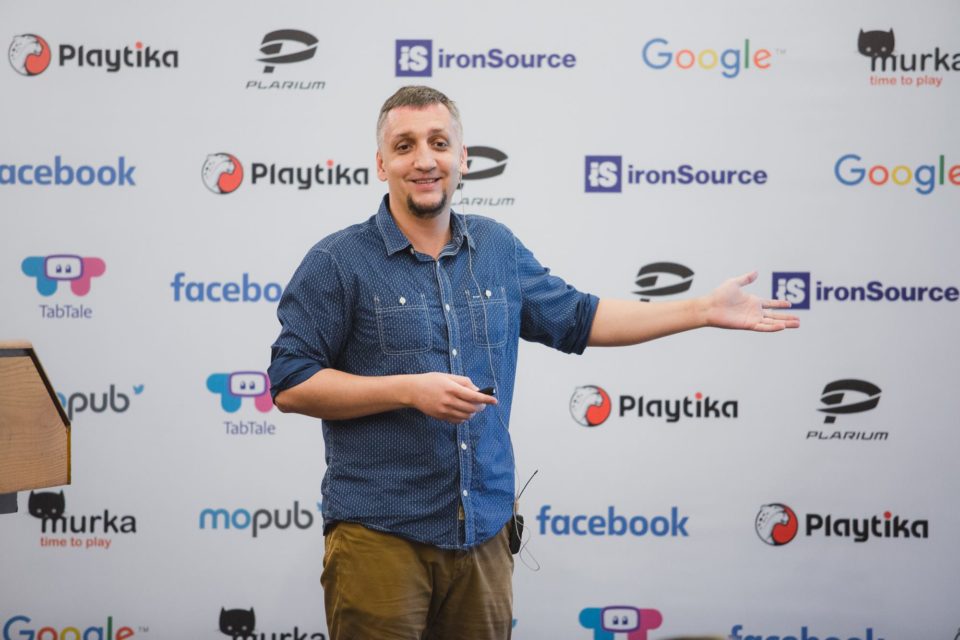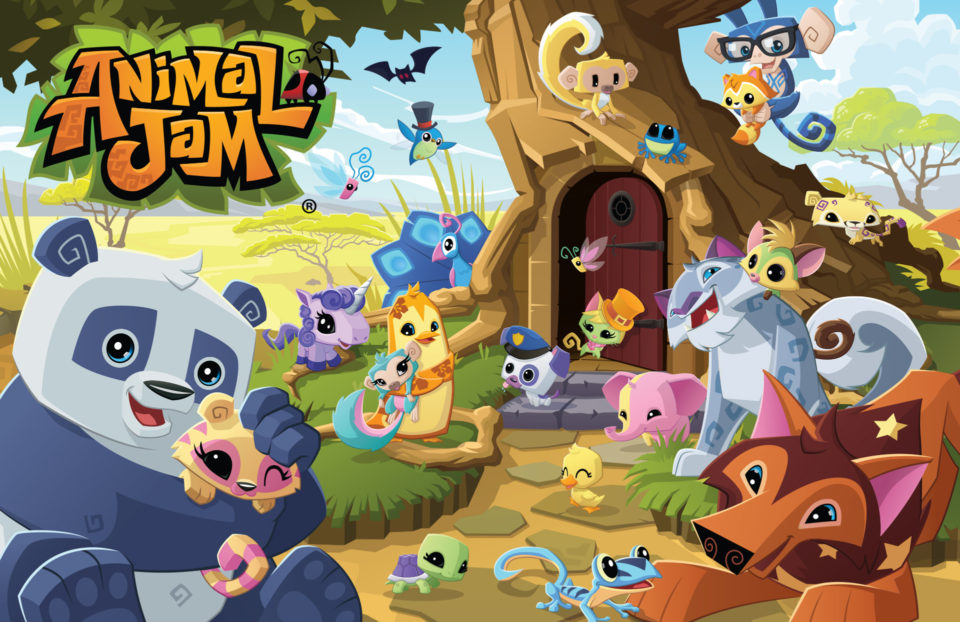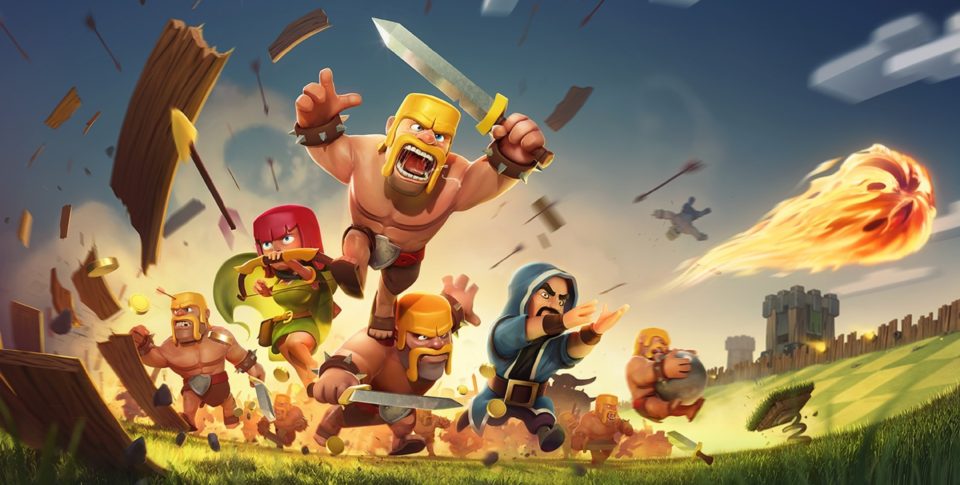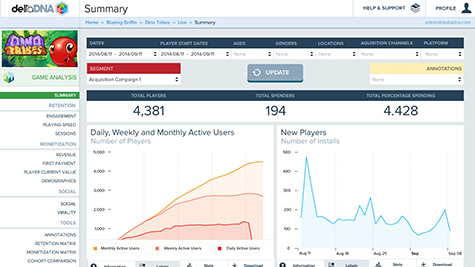Premium kids apps sales have decreased drastically: even using Dinotrux or Shrek didn’t help Fox and Sheep to achieve planned sales volumes. Bobaka’s Green Riding Hood as well didn’t sell well even through it was named iPad App of the Year by Apple in 2015. Why out? Transform your creation into a free-to-play children’s educational service with episodic content and parents-friendly microtransactions, suggests Alexander Nasonov, co-founder and executive producer at Bobaka in his Casual Connect Tel Aviv session, explaining it on the case of Green Riding Hood.
main
USA 2016Video Coverage
Mitch Smiley: Fun and Education at WildWorks | Casual Connect Video
Marketing a game developed for children comes with its challenges. Dealing with COPPA regulations in addition to the always-changing digital marketing landscape, can make it difficult to execute an effective user acquisition campaign. In his Casual Connect USA session, WildWorks’ Mitch Smiley explained how to embrace the challenge and run an ROI-positive campaign, with success stories and learning opportunities from the leading web-based kids game in the US, Animal Jam.
EditorialIndustryNews
Supercell Purchase by Tencent Shows Mobile’s Unequaled Equity
Tencent has made huge waves, officially announcing the rumored purchase of Supercell. The deal will be for $8.6 billion U.S. dollars, and the Chinese internet company will own an 84 percent stake.
The Deal Detailed
A majority of these shares are being purchased from the Japanese telecom company SoftBank, which bought a majority share in 2013 for $1.5 billion U.S. dollars. SoftBank makes out well with this deal, having already cashed out $1.1 billion U.S. dollars in dividends and now selling for upwards of five times what they purchased it for.
The move was a final one by SoftBank president Nikesh Arora, who stepped down from his position. SoftBank CEO Masayoshi Son will remain in his role, which Arora wanted, so Arora will move on instead.
The news, however, was primarily about Supercell and what will change (and won’t) as Tencent continues its rise as the owner of some of gaming’s most important companies.
ContributionsEditorialOnlineStudio Spotlight
MegaZebra: Pioneers Blazing the Trail
When MegaZebra started in 2008, they were pioneers. Along with making games, the company also had to create the market in Europe from the ground up. To top it off, the company’s founders came from Internet and mobile backgrounds as opposed to a more traditional gaming background. This ended up proving fortunate for the company as it helped them tackle problems in a unique way as the gaming industry evolved.
Belgrade 2014Live CoverageVideo Coverage
Uroš Banješević is All About the Game | Casual Connect Video
Uroš Banješević, together with his co-founder Nenad Tomić, shared the story of their company Mad Head Games during Casual Connect Eastern Europe 2014. “What we were looking for was a one-night stand with the girl called game development, and we ended up married to her”, he says.
DOWNLOAD SLIDES
Uroš Banješević is the co-founder and CCO (Chief Creative Officer) of Mad Head Games. Together with friends Nenad Tomić and Aleksa Todorovic, he founded this company in 2011, and now proudly claims, “We are currently the leading HOPA developer in the world.”
By the time they founded Mad Head Games, Banješević had worked with his co-founders for six years in a journey that brought them many experiences, a great history together, and a store of knowledge. With these assets, they knew they could create beautiful games. At the beginning, he was officially the art director, but as the company has grown, his position has become more difficult to define; basically whenever someone needs help, he is there to assist. He is someone who is an endless source of energy, always looking for a new adventure and new ways of doing things.
Their optimism has definitely been born out, with Mad Head Games named as the Best Casual Developer of 2013. And when their publisher Big Fish Games revealed its list of the greatest games of all time, six of the top seven were from Banješević and his team.
The Value of F2P
Banješević is a strong proponent of the F2P model for designing and distributing games, and notes as well the importance of the platform spotlight moving from PC and consoles to handheld devices. This is the route Mad Head Games is determined to follow, moving from developing primarily for PC and consoles to mobile, and from premium games to the F2P business model. He believes F2P offers the best rewards, and that Mad Head Games is more than equal to the challenges of being the best in that arena.
F2P and mobile are the trends making the biggest impact on the games industry today, according to Banješević. But he emphasizes, “F2P is not just about the business model, it is about the entire design of the game.” Since Mad Head Games considers game design their strongest proficiency, they believe they will be able to raise the bar and create completely new experiences.
A second trend Banješević finds exciting is virtual reality, with ground-breaking technologies like Oculus Rift, although he suspects it may not be widely accepted. Even so, he admits, “The first time I put Oculus on my eyes, I was blown away. It was a completely new experience.”
All Work, All Play
Banješević’s passion for playing and creating games encompasses both his work and his free time. As a game developer, he finds his life complex and extremely busy, so his iPhone is now his preferred platform due to these advantages: it is always accessible, the play sessions are short, and the games are pure fun. Previously, the games he enjoyed were AAA titles on PC, but the time commitment these require is no longer feasible.
He has enjoyed many mobile games, but currently the game that keeps him returning to his phone is Clash of Clans. And it is certainly the one that has enticed him to spend the most money.
Banješević has many hobbies that are not directly related to game development, although he believes these all contribute to making him a better developer. His unique assortment of activities includes playing basketball, playing guitar, writing and singing, as well as studying ethnology.
At Casual Connect Eastern Europe 2014, he announced Mad Head Games latest creation, Minibang. This is the game he feels will create an entirely new world and redefine the genre of Point’n’Click adventures.
Belgrade 2014Live CoverageVideo Coverage
David Maret: Strike the Right Balance with Games | Casual Connect Video
“The foundation of a sound user acquisition strategy is built around explicit KPIs and rigorous measurement,” David Maret explains. He moderated a panel which discussed lessons on acquiring new players while at Casual Connect Eastern Europe 2014.
When a developer friend introduced David Maret to Chartboost, he was immediately impressed with the energy, ambition, and culture he found and after meeting with Pepe Agell, head of international at Chartboost, he realized this was where he wanted to work. And today, he is still excited about working for Chartboost as the head of developer relations, Europe.
At Chartboost, Maret is responsible for overall developer satisfaction and for assisting top companies to reach their full potential. Previously, Maret held a variety of positions at eBuddy, YD World, and Distimo (now AppAnnie), giving him a strong foundation in business development and account management, as well as the ability to identify the strategies needed to reach goals. He believes, “Combining these three elements of my role within a highly ambitious environment has contributed to the value I can add to this highly ambitious company.”
Maret’s personal philosophy of success includes being passionate about what you do, sharing knowledge, and always being open to learning new things. He is constantly questioning, wanting to learn more and dig deeper. And, since his philosophy aligns with Chartboost’s, it offers a stimulating environment for him to work in.
Always Moving
In his leisure activities, Maret is anything but relaxed. He loves sports and the outdoors; his latest passions are kite surfing and mountain biking. He also enjoys windsurfing, rock climbing, competitive cycling, and running. He reveals, “I guess you could say I enjoy anything that gets my heart racing and my adrenaline pumping.”
His gaming has changed over time. He used to love playing Forza or Gran Turismo on Xbox or PS3, and would, in fact, spend entire weekends playing them. But these days, although he still keeps a few consoles in the house, time constraints limit his playing, so he now finds mobile games a great alternative. Playing games on his iPhone is ideal because these games can be played in short spurts. And working at Chartboost exposes him to many exhilarating games. His current favorites are Lumosity, Asphalt Overdrive, and Real Boxing, which reminds him of his sessions playing Fight Night when he was younger.
Find the Balance
Free-to-play is a model Maret appreciates as a gamer since it allows you to play many different kinds of games as opposed to the restrictions inherent in paid games. He insists, “It opens up gaming to a huge audience, so game developers need to make sure their games are sticky and really well thought through. This just drives innovation and more creativity across the industry.”
However, Maret has seen F2P games that go too far in attempting to monetize users with in-app-purchases and ads until they jeopardize the user experience. He emphasizes, “Game developers have to strike the right balance between making a compelling game that can be enjoyed for free but, at the right moment and in the right moment, hooking the player to pay for in-game items.”
Within the next several years, Maret foresees automated trading and smart bidding will play a much bigger role for game developers. The keys to succeeding in this environment will be knowing what to pay for a user at any given time and engaging with users at the right moment. He also believes that multiplayer online battle arena games will become extremely important during the coming months. After the success of Clash of Clans and Game of War – Fire Age, players are looking for similar games that allow them to wage battles against other players with less time spent on regeneration.
Belgrade 2014Live CoverageVideo Coverage
Vincent Vergonjeanne: Slowly Recruit Top Talent Only | Casual Connect Video
When it comes to the challenge of online games, Vincent Vergonjeanne offered this advice to his audience at Casual Connect Eastern Europe 2014: “Get your priorities straight. Understanding your retention is the one key to the long term success of your online game.”
“Creating games is the most complete form of expression that I know. It is also the only one that allows me to touch so many lives,” says Vincent Vergonjeanne, a free-to-play consultant, business angel, and a lean startup enthusiast.
At the young age of twelve, Vergonjeanne started programming. By age thirteen, he collaborated with another young artist. Together, they developed over eight games by the time they were twenty years old. They eventually drifted apart, but the seeds were planted. He shifted from IT jobs which paid well to video game jobs which paid much less. In 2009, Vergonjeanne and a couple other friends created Kobojo in France. With over a million daily users and a Series A of 7.5 million dollars, Kobojo grew to be one of the largest social gaming companies in Europe with up to 90 employees.
EVERYDAYiPLAY and Free-to-play Games
Vergonjeanne currently lives in Krakow, Poland. It is where he has founded EVERYDAYiPLAY, a new game studio specialized in mid-core gaming. According to their website, the company believes “in hand-crafting fun, recognizable, and beautiful games with a no-compromise-policy on quality”. They have three simple rules: stay small and do only one game at a time, stay independent forever, and recruit top talent only. Their current game is a strategy and action game entitled Vikings Gone Wild. In 2013, Vikings Gone Wild was chosen by Facebook as one of the Top 10. In fact, Vikings Gone Wild has been installed by more than 2.5 million people.
Consistent with one of the company’s rules to recruit top talent only, Vergonjeanne took his time in hiring people for Vikings Gone Wild. Initially, he did coding himself for the first four months. This gave him the freedom to find highly talented programmers for the game. For Vergonjeanne, being a programmer allows great insight on all technical decisions of the company. When he is not programming, Vergonjeanne works as product manager. He deals with the product roadmap which includes features and content of the game. Basically, the idea is to apply the learning which occurs in game design and monetization. Designing free-to-play is challenging. Experience has helped him make more informed decisions.
As for the future, Vergonjeanne sees free-to-play games being a key part. According to Vergonjeanne, as the free-to-play market matures, “casual games will be harder to make successful as the necessity of high volumes to make it profitable is only accessible by larger companies.” There is a need for specialized games, which are targeted to specific audiences. This is a niche that EVERYDAYiPLAY fills. The targeted strategy games they make enable them to touch the intended audience on a deeper level.
Vergonjeanne is a PC and mobile player. He mainly plays similar games to what he creates: mobile Real-time strategy (RTS) games. He does this so that he can discover and understand the best features of the genre, be inspired, and be able to recognize ideal economical tensions. He describes himself as both creative and analytical. Vergonjeanne is analytical in that he believes that better decisions are made if you first analyze past experiences and thereby seek patterns and learn from them. He is creative because he finds “nothing more fulfilling than the sentiment of creation”. The process of creation, which is a way of giving life to ideas, is what motivates him. Vergonjeanne has two beautiful children. His most recent passion is Lego. Just as game developers do, he loves how Lego (specifically the Star Wars line), “reinterpret pop-culture references into a world with its own visual rules and scale”.
After all of Vergonjeanne’s experience, his proudest moment of his career was when he founded EVERYDAYiPLAY. With no venture capital money, the studio is profitable and has grown to more than 20 extremely talented people. Vergonjeanne states, “This studio is the result of many learning in process, scale, and product, and its success a tremendous validation”. EVERYDAYiPLAY’s commitment to quality product holds promise for the future.
Belgrade 2014Live CoverageVideo Coverage
Nenad Tomić: Quality Above All Else, Without Exception or Compromise | Casual Connect Video
“We were not inspired by money or something else,” Nenad Tomić expressed. “We were only focused on one goal and that’s how to create the best game ever.” Along with co-founder Uroš Banješević, he described the journey of their company, Mad Head Games, during Casual Connect Eastern Europe 2014.
DOWNLOAD SLIDES
Nenad Tomić founded Mad Head Games with Uroš Banješević just over three years ago. In just six years, Tomić has been involved in the release of more than 50 games ranging from AAA titles for Ubisoft to more casual games for numerous clients. While Tomić’s most prestigious accomplishment was being involved with the development of CG portals, the awards won as a part of Mad Head Games are the accomplishment which make Tomić the most proud, as it is what defines him as the developer he is today.
Tomić’s Introduction into the Game Industry
As of now, Tomić has two separate jobs. The first one, he admits “is a bit boring and not inspirational, and that’s running a company”. The second embodies the reason Tomić went after a career in game development: designing games. During the last eight years, Tomić has been a part of game and level design, 3D modeling, some basic coding, producing, writing stories, etc. Since he has been doing all of this, he has become a “jack of all trades, master of none.” And yet, Tomić has a rich overview of their work as well as “a good understanding of how to makes games that will stand out”.
For Tomić, his straight-forward, systematic nature springs from his traditional education while being trained to be a telecommunications engineer. Tomić explains, “being systematic in game development, and especially with running a company, helps a great deal, even though from time to time it clouds some more creative and innovative paths.” It is for this reason that he strives to find a balance between his systematic nature and the creativity required for game development.
Tomić does not limit his game design to work, he also claims it as a hobby, “Yep, making games for work and doing it as a hobby is kinda messed up, but it is how it is.” He also enjoys juggling, rollerblading, and participating in all sorts of sports, especially the social ones. In his free time, Tomić also plays iOS games on the phone and tablet. For the majority of his life, he played PC games, but has now shifted. Tomić explains, “The reason for that is probably the fact that I spend the most of my day sitting at my computer, and when the time for playing games actually comes, I prefer to be in a more comfortable and so to speak ‘casual’ position.” Currently, he is playing Cookie Clicker and Clash of Clans (CoC). When he first started CoC, it was for educational purposes. He wanted to learn how F2P works. However, before Tomić knew it, he was hooked and it was no longer about education. As for Cookie Clicker, it has a “madness of its own, and I don’t have a true explanation why I still play it.” As far as consoles go, Tomić doesn’t know why they were never tempting for him. The only exception: Little Big Planet and Journey for the PS3. These games are definitely on his bucket list of future games to play.
Now that Tomić has experienced F2P as a consumer, he loves how this genre has the possibility to reach a wide range of players. Additionally, F2P games have great potential for creativity and innovation towards “nailing down the proper way of producing a fun and fair game,” stated Tomić. On the flip side, he hates how often there is cloning and reusing of optimal monetization strategies with a total lack of innovation. Lazy design strategies result in redundant games, which reinforces the perception of games being evil money suckers. Tomić does have one gripe: the waiting times associated with F2P, which Tomić admits that he really hates.
Defining Events Which Shaped the Company
The defining moment of Tomić career is when he witnessed the reception of Mad Head Games’ Rite of Passage. Although the team had worked tirelessly to ensure quality coming first in every aspect of the game, nerves were high upon release. Tomić reflected on how Rite of Passage was the team’s first casual game, stating, “We had our doubts even though we knew that we went back a thousand times to do all little improvements that were hardly noticeable.” Even though they had even rejected whole sections of the game because they didn’t meet their high standards, they were naturally anxious about the audiences’ reception. When the game hit the number one position of Big Fish Games’ top downloaded games, Tomić knew that their efforts to ensure quality first were not in vain. This moment is when they knew, “we wanted to make only games of the greatest quality and that there’s hardly a greater reward than seeing people enjoying the game you made, and hearing that in some ways it changed their lives – even if it is just for a while.”
From that moment on, the team members were able to give their absolute best because they were vastly more confident in decisions during production. They were able to stay fearless and innovative with the upcoming projects. Through this experience, they also realized that if a concept doesn’t work, it needs to be revamped until it does work. Also, if there is a part of the game that doesn’t amaze them, it won’t amaze the audience. If this is the case, this part of the game must be fixed.
Tomić finds great joy in seeing the growth of Mad Head Games’ team members, which replicates throughout the company and enables an ever increasing quality of games. Tomić explains that one thing that has encouraged this growth is the fact that Mad Head Games has, “invested a lot of time and energy into working with people on their self improvement, and teaching them to embrace our initial core values as their own. Seeing that work, everyone being happy about it, and being enthusiastic about upcoming challenges is priceless.” Personal growth is important and enables company-wide growth, which benefits everyone.
The Next Couple of Years
If Tomić had to predict one trend which would shape the industry in the next couple of years, he would pick wearable technology. He believes that the impact will be similar to the upset of mobile. He further explained, “I’m absolutely sure that developers will come up with crazy innovations that are unimaginable to us at this moment, and I can’t wait to jump onto that train.” To further illustrate his point, he said that plans are already being pursued in this field, but it is still far too early to announce it.
BusinessExclusive InterviewsIndustryOnline
Mark Robinson: “Look Deeper” at Your Data

Mark Robinson likens the experience of data-mining to exploring a new city, noting “I have always liked being lost … and then uncovering something surprising and thought-provoking.”
Robinson has been tackling data analytics and helping bring companies closer to their customers for over 15 years. But one sector has been lagging in connecting with their user base. “The (gaming) industry lives with retention rates that are too low,” Robinson says. “And it’s our fault, not the players. By getting closer to the players, we can understand their frustrations and deliver fun more consistently.”
ContributionsIndustryOnline
Viewing the Mobile Games Industry From the Inside
Kim Soares is the founder and CEO of the Finnish mobile game developer Kukouri Mobile Entertainment. Kukouri’s Tiny Troopers games have more than 11,000,000 downloads on iOS and Android, with their most recent game in the series, Tiny Troopers: Alliance, was released in October. He reflects on the current state of the industry.
A Non-Existent Barrier to Entry
The game industry has been living a revolution for last few years. The mobile game market that has emerged, combined with tools like Unity, have made the barrier of entry practically non-existent. Anybody with some skill and few hundred bucks can get a game into App Store or Google Play.
This is huge change compared to the situation just a few years ago. Games were made either for PC or consoles, and budgets were millions. Founding an indie game developer required a substantial team, a lot of capital, and at least a year or two to get your game to the market. If a publisher or platform owner didn’t like your game, you were screwed with no way to get your product to the market. Steam and other digital channels were the first to disturb this model, but the real revolution came in the form of the mobile market.
This, of course, is a good thing in many respects. New mobile game developers with new ideas and fresh perspective have sprung out in the hundreds. In mobile, there are no gatekeepers like the console platform owners who would dictate who gets to the market and who doesn’t. Gamers have never had so many games available to them in the history of video games. And most of the mobile games don’t cost a dime! However, there are downsides too, and some of them threaten the stability of the whole mobile games industry.
Discoverability is a Huge Issue
More than a thousand new games are released on App Store every single day. The fact that follows is that for the most part, your game is invisible to the consumers. If you don’t land Editor’s Choice or at least Best New Games placement, then users have next to zero chance of stumbling on your game in the App Store.
In that unfortunate but very common situation, the only way users could find your game is if they somehow have a previous knowledge of it. Instinctively, many developers turn to the different mobile gaming sites, looking to get their game reviewed. However, traditional gaming media does not make much difference any more. The majority of the users, especially those under 20, cannot be reached via traditional gaming media sites. Mobile gamers do not read print magazines. They just don’t. PC and console gamers, the older ones, might still read reviews from print magazines, but even there, the younger generation has more or less abandoned print. If you look at the impact of even the biggest internet gaming sites on mobile gaming, it is often non-existent. So even a great review on all the top mobile gaming sites will not really matter. I’m sad to say this, as my own background is from print gaming media.
For anyone under 20 years, the Youtubers are the media they follow, and it is the best way for your game to get enough exposure. I have paid close attention to how my teenage daughter and son, along with their friends, decide what mobile games to play. It’s always either ”I saw Youtuber X playing it” or ”I saw my friend X playing it”. It doesn’t have to be PewDiePie; there are many others who get a huge amount of views for their videos, too. A thing to consider though: many Youtubers expect to be paid for having your game on their show. But hey, that’s what you have a marketing budget for.
Getting Downloads
There are two ways of getting users to download your game that are far more effective than anything else. One costs a lot, the other one is free.
Paid user acquisition can get as many users to download your game as you desire. It’s going to cost you a pretty penny though. That is the reason why start-ups need investor money. Many companies who are in the top grossing charts making millions actually feed a good portion right back in the system in the form of ads in other games.
Cost of paid user acquisition has been out of hand for a long time now. In the early days, the mobile space was the Shangri-La, where small indie developers could match and even beat large publishers. All you needed was a good game. That has changed and even though the initial barrier to entry, in the form of making a game and putting in on store, is still as low as ever, the real barrier is the cost of user acquisition and that one is very high indeed. Because of this, surviving in mobile game space can be even harder than in PC and console games.
The free way of getting downloads is organic growth, i.e. word-of-mouth. It is as simple as players showing your game to their friends, telling them how they like it or wanting to play your game with other people. It is not easy to do, but you can build your game to optimize the organic growth.
One example is Flappy Bird, which really took off like a wild fire. However, you cannot just copy what has worked for others. Flappy’s devilish difficulty was a major factor in its success, but just making your game infuriatingly difficult does not mean it would take off like Flappy Bird did.
It is easier to design your game to have opportunities for real social interaction. If players really want to send challenges to other players, invite their friends to play with them, exchange goods with other players, etc., that can give your game a huge boost for both the organic growth and retention. An example can be found In Tiny Troopers: Alliance. In the game, the player alliances fight against each other in weekly wars. An alliance cannot hope to win unless the majority of its members take part in the war effort. This will result in active players joining together and people telling their friends to download the game and play together. It’s all about people having something to do that they can do better with other people joining them.
Publishers are Still Needed
Another way to increase your chances in making it is to get a publisher for your game. Good publishers have a portfolio of games that can have tens of millions of active users. They use this user base to cross-promote their games. With the right publishers, this can be worth millions. The downside is that the publisher will take around 30-40 percent chunk of your game’s revenue.
You have to make the decision if losing a portion of the (potential) revenue is acceptable in exchange for increased number of downloads your publisher can (potentially) get for your game. Many publishers out there are small and cannot really drive large enough downloads to justify you giving them that royalty share. The deal works for them, as they are getting revenue from the many games in their portfolio but at the same time, the individual developers in their portfolio could all be going bankrupt. So if you are going to use a publisher, use a big one.
Money is in F2P
Pricing is a crucial decision. Free-to-play is here to stay, and users have shifted to it whether we like it or not. You can get very good revenue with a paid game still, but the potential of F2P games is way better. If you take a look at the US charts at any given day, the most downloaded paid app will be on around 60-100 position on top grossing charts. Even if your paid game is the most downloaded paid app, you are still way behind the F2P titles.
The gap between the F2P and paid games is even wider than you might initially think, looking at the chart positions. A game on position 100 on a top grossing chart might make only around 1/2000 of what the game on position 1 is making. Revenue distribution is extremely polarized and the difference between the revenue, even inside the top 10, is very much skewed to the top 3.
Some indie developers say that they are not in it for the money. If someone is in a position that they can do games for free, that’s great for them. However, if you are running a business, you are looking to stay in the business and hopefully even make some profit. Even though you can be able support your company with a paid game too, investors are not interested in companies that just stay a float or make modest profit. This is an important thing to consider as well, if you are looking to raise some funds.
What Platform to Choose
Chances are that you are using Unity3D, the weapon of choice for most mobile developers. With Unity, it is comparatively easy to develop your game for multiple platforms. You will always start with one platform though, and you have to consider if porting your game to other platforms is worth the extra work.
So, what is the best mobile platform: Android, iOS, Windows Phone? Android does have largest install base of devices and it’s especially prominent in Asia. However, Android users are notoriously hard to monetize and most of the revenue is still coming from Apple’s App Store i.e. iOS.
Another problem with Android is that it is a very fragmented platform. This means a lot of extra work optimizing your game for myriad different device-OS combinations. Then again, in my experience, as much as 80 percent of the downloads on Android can come from 4-6 leading devices. So it could be a good decision to just set the bar high and not support all the lower end devices.
As for Windows Phone, it is very marginal compared to either Android or iOS. Also, there is a lot less competition, but making a living out of WP game is not likely. One thing to keep in mind is that the more exposure you have for your game, the better: there’s synergy in having your game on multiple platforms. For example, when we released Tiny Troopers on Android, there was a clear increase on downloads on iOS that had been out for six months already, too.
Closing Words
Most game developers in the mobile industry don’t make it. That’s the harsh truth which is easily forgotten when reading Cinderella stories of companies getting millions of investment money or making millions revenues. But you have a better chance of making it if you realize this truth.
You can improve your odds a lot by not just rushing forward. There is gold in them mountains, but you have to be prepared to work for it. The days when you could just pick the nuggets from the ground are long gone.













